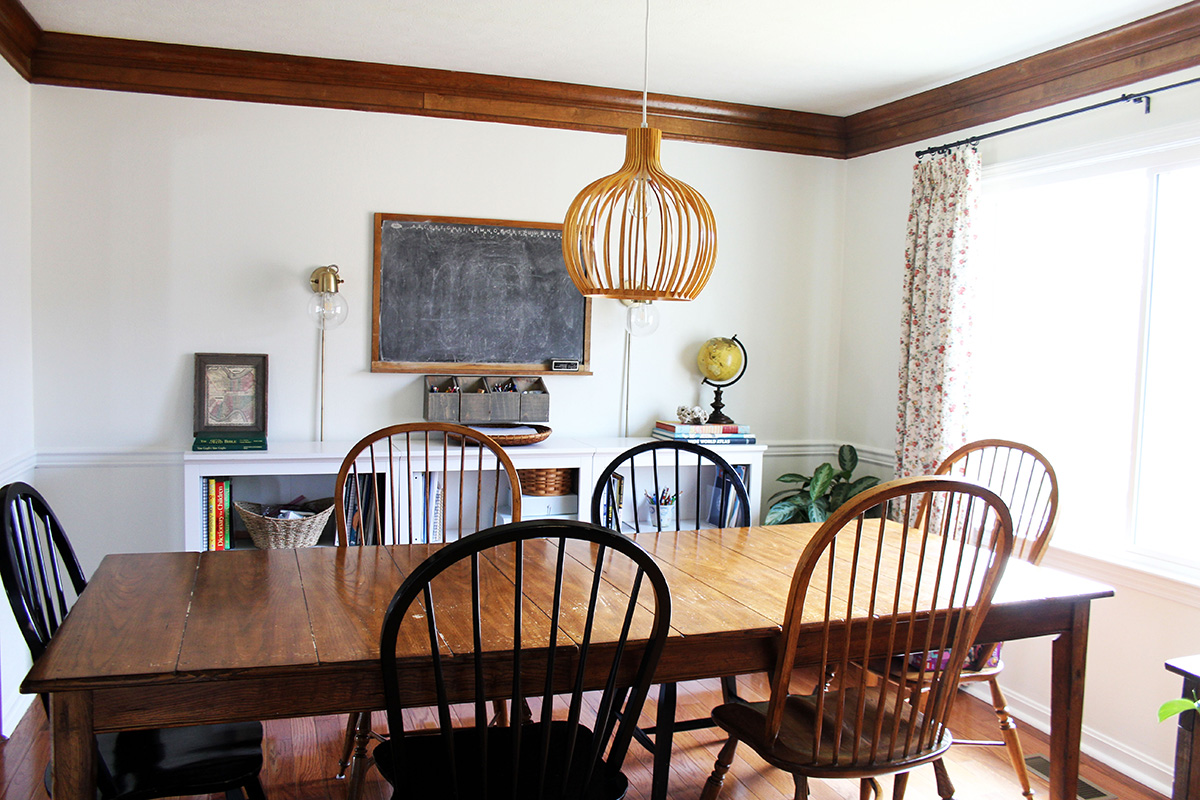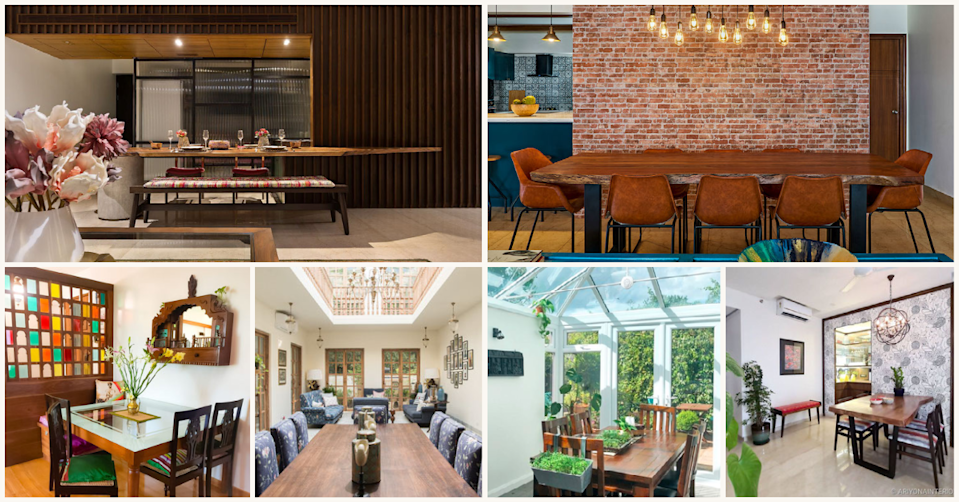Homeschooling has become increasingly popular in recent years, and many families are choosing to educate their children at home. With the rise of remote learning and the need for flexibility in education, more and more parents are turning to homeschooling as an alternative to traditional schooling. One of the most common challenges for homeschooling families is finding a suitable space in their home to use as a classroom. If you're considering homeschooling in your dining room, here are some tips and ideas to help you make the most of this unique learning space. Homeschooling in the Dining Room: Tips and Ideas
The first step in creating a homeschool space in your dining room is to declutter the area and remove any unnecessary furniture or items. This will help you maximize the available space and make it easier to set up a classroom. Consider investing in a large, sturdy table that can serve as a desk for your child. You can also use bookshelves or storage units to keep school supplies and materials organized and easily accessible. How to Create a Homeschool Space in Your Dining Room
Transforming your dining room into a homeschool classroom can be a fun and creative project for you and your child. Get them involved in the process by allowing them to help decorate the space and choose the color scheme. Hang up posters, maps, and educational charts on the walls to make the room feel more like a traditional classroom. You can also add a rug or bean bag chairs to create a cozy reading corner. Transforming Your Dining Room into a Homeschool Classroom
If you have a small dining room, you may be worried about fitting all of your homeschooling materials and supplies in the space. However, with a little creativity, you can make the most of the available space. Consider using wall-mounted shelves or hanging baskets to store supplies and keep them off the floor. You can also use a rolling cart or storage ottoman to store materials that you can easily move out of the room when not in use. Homeschooling in a Small Dining Room: Maximizing Space
Like any decision, there are pros and cons to homeschooling in your dining room. On the positive side, using your dining room as a classroom allows you to have a designated space for learning, making it easier for your child to focus and stay organized. It also allows for a more flexible schedule, as you can easily transition from schoolwork to meal times. On the other hand, sharing a space with your dining room may also make it challenging to create a separation between school and home life. Homeschooling in the Dining Room: Pros and Cons
A homeschool station is a designated area where your child can keep all of their materials and supplies. This will help them stay organized and reduce distractions during their learning time. In your dining room, you can set up a small desk or table with a chair and a few storage bins for books and supplies. This will help your child have a designated workspace and keep their materials close at hand. Setting Up a Homeschool Station in Your Dining Room
Keeping your homeschooling materials and supplies organized is crucial for creating an efficient and productive learning space. In addition to using shelves and storage units, you can also use labeled bins or baskets to keep materials separated and easily accessible. You can also repurpose items you already have in your dining room, such as a buffet or sideboard, to store books and supplies. Homeschooling in the Dining Room: Organization and Storage Solutions
Having a schedule is essential for successful homeschooling, and this is especially true when using a shared space like your dining room. Sit down with your child and create a schedule that works for both of you. You can include breaks for meals and physical activity, as well as designated learning time. Having a schedule will help your child stay on track and make the most of their learning time in this shared space. Creating a Homeschool Schedule for Your Dining Room Classroom
Ultimately, homeschooling in your dining room will look different for every family. It's essential to find a system that works for you and your child. This may involve trial and error, but don't be afraid to make adjustments and try new things. Remember that the most important thing is that your child is learning and thriving in this unique learning environment. Homeschooling in the Dining Room: Making it Work for Your Family
One of the most significant advantages of homeschooling in your dining room is being able to incorporate meal times into your child's learning schedule. This allows for a more relaxed and natural approach to meals, where your child can take breaks and enjoy their food without feeling rushed. You can also use meal times as a way to teach your child about nutrition and involve them in meal preparation and clean up. Homeschooling in the Dining Room: Incorporating Meal Times
Turning Your Dining Room into a Homeschool Space

The dining room has always been a central gathering place in any home. It's where families come together to share meals, celebrate special occasions, and make memories. But in recent times, the dining room has taken on a new role - a place of learning. With the rise of homeschooling, many families have transformed their dining rooms into functional and inspiring homeschool spaces. Here's why the dining room is the perfect spot for homeschooling and how you can turn it into the ultimate learning environment.
The Benefits of Homeschooling in the Dining Room

Homeschooling in the dining room offers a variety of benefits for both parents and children. Firstly, it provides a designated space for learning, making it easier to establish a routine and maintain focus. Unlike a bedroom or living room, the dining room is free from distractions like toys or television, creating a more conducive learning environment. Additionally, the dining room table serves as a central workspace for both parents and children, allowing for collaboration and hands-on learning activities.
Another advantage of homeschooling in the dining room is its versatility. During non-school hours, the dining room can easily be transformed back into a traditional dining space for family meals and gatherings. This eliminates the need for a separate homeschool room, which can be challenging for families with limited space.
Transforming Your Dining Room into a Homeschool Space

Creating a functional homeschool space in your dining room doesn't have to be complicated or expensive. Start by decluttering the room and removing any unnecessary furniture or items. This will free up space and create a clean and organized environment for learning. Next, invest in a large, sturdy table that can serve as a workspace for both parents and children. Make sure to also have comfortable chairs and proper lighting for optimal learning conditions.
Personalization is key when it comes to homeschooling in the dining room. Hang educational posters and artwork on the walls, add a whiteboard or chalkboard for lessons and reminders, and incorporate storage solutions to keep supplies and materials organized. You can also use a bookshelf or cubbies to display books and educational resources.
Making the Most of Your Homeschool Dining Room

The dining room provides a unique opportunity to combine learning and everyday family life. Take advantage of this by incorporating educational activities into meal preparation and clean-up. You can also use the dining room to showcase your child's work and achievements, creating a sense of pride and motivation. And don't forget to take breaks and enjoy meals as a family in this multi-functional space.
In conclusion, turning your dining room into a homeschool space offers numerous benefits and is a practical and cost-effective option for many families. With some creativity and organization, you can transform this central room into a functional and inspiring learning environment that fosters both academic and personal growth for your child.































/DesignbyVelindaHellen_DIY_PhotobyVeronicaCrawford_5-3a24d1b0b5394eae892b8c5bbaea23f4.jpg)































































